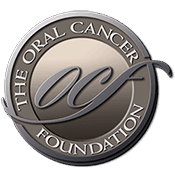Imaging, physical examination find most recurrences of HPV-positive oropharyngeal cancer
Source: www.oncologynurseadvisor.com Author: Kathy Boltz, PhD Posttreatment imaging at 3 months and physical examinations during the 6 months following treatment can detect most recurrences in patients treated with definitive radiation therapy for oropharyngeal cancer caused by human papillomavirus (HPV).1 This research was presented at the 2016 Multidisciplinary Head and Neck Cancer Symposium. A dramatic increase in oropharyngeal squamous cell carcinoma (OPSCC) cases associated with HPV has been reported by the American Cancer Society. Survival rates after definitive radiation therapy have also increased. This has led to the need to determine general time to recurrence and the most effective modes of recurrence detection, to guide standards for optimal follow-up care by oncology teams. This study examined 246 cases of HPV-positive or p16-positive non-metastatic OPSCC treated with definitive radiation therapy at a single, large-volume cancer center between 2006 and 2014. Follow-up care included a PET/CT scan 3 months after completing treatment and physical examinations every 3 months in the first year following treatment, every 4 months in the second year and every 6 months in years 3 through 5. Median follow-up care length for all patients was 36 months. Patient outcomes, including recurrence and survival rates, were calculated using the Kaplan-Meier method from the end of radiation therapy. Most recurrences were detected either by persistent disease appearing on 3-month post-treatment imaging or by patients presenting with symptoms at follow-up examinations. Disease characteristics that increase the likelihood of recurrence include presenting with 5 or more nodes or having level 4 lymph nodes (P [...]
